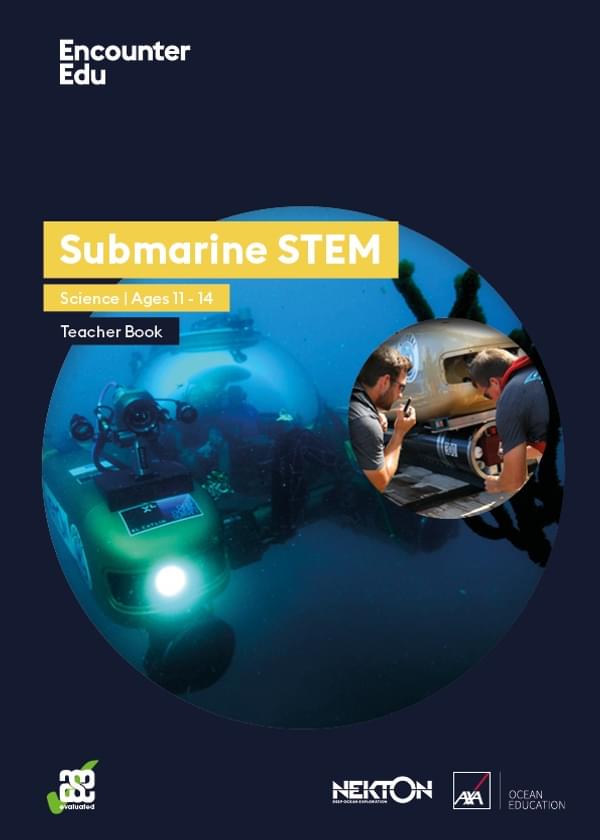Learn more: How are submarines used for deep ocean exploration?
The Submarine STEM units of work focus on the science of submarine design. Students will follow in the footsteps of pioneers in this space, considering the different scientific concepts from forces and pressure to material choices needed for surviving in this inhospitable yet amazing environment.
History of submersible exploration
The first manned dives to the deep ocean took place only in 1930 when William Beebe and Otis Barton descended to a depth of 245m in the Bathysphere near Bermuda. Over the following years, this team of engineer, Barton, and naturalist, Beebe, advanced submersible technology, achieving a dive of 923m on August 15, 1934.
The next significant milestone in submersible exploration took place in 1960. A secret US Navy project, codenamed Project Nekton, saw Jacques Piccard and Don Walsh descend 7 miles down in the bathyscaphe Trieste. Reaching the bottom of the Challenger Deep, the lowest point of the Marianas Trench in the Pacific Ocean, they were the first people to achieve full ocean depth.
Since 1960, several governments and university institutes have embarked on scientific research of the deep ocean. However, relative to the size and significance of the deep ocean, the world’s submersible capabilities have far to go.
The Nekton missions are using the next generation in submersible technology, the Triton submersibles. With their fully transparent spherical pressure hulls, these revolutionary vessels allow scientists to view and record the deep ocean as never before.
Challenges of exploration of the deep ocean
At least 95% of the deep ocean is unexplored. It is an extremely difficult place to observe, let alone to visit ourselves. Until recently marine science was conducted entirely from the surface.
The most immediate barrier to deep ocean exploration is its darkness. Water scatters and absorbs light. No light at all penetrates to the ‘midnight zone’, at depths below 1000m. In practical terms, only in the ‘sunlight zone’ at depths above 200m, can scientists see what they are studying without the need for artificial light.
But the greatest technological barrier to ocean exploration is the weight of water itself. The ocean is an extremely hostile environment, where pressure increases by one atmosphere roughly every 10m you go down. At the deepest point, approximately 11 kilometres down, the pressure is 1100 atmospheres. This is the same pressure as an elephant standing on your little toe or the pressure in the chamber of a gun when a bullet is fired.
Animals that live in the deep have adapted to life under pressure, with special swim bladders, squidgy bodies and bendy bones. However, humans need to use technology to explore the deep ocean. The deepest scuba diver has reached 318m down. Below this, humans need to survive inside hollow pressure hulls, built to withstand these extraordinary forces.
